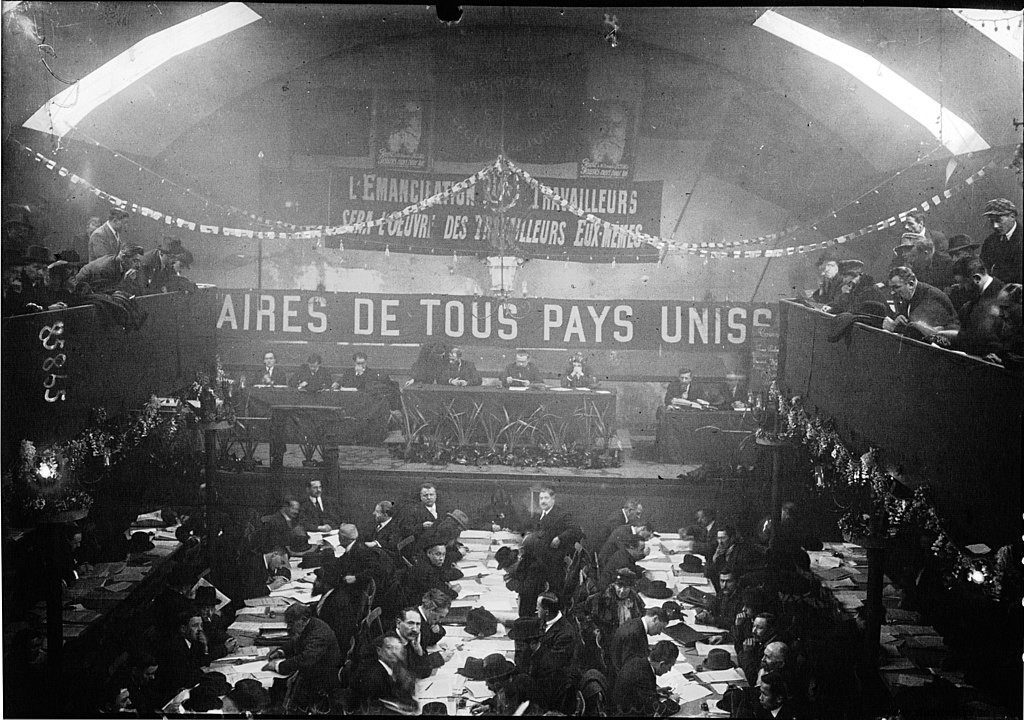- The unity of the SFIO was disrupted by the adhesion of almost all socialists to the Sacred Union. However, with the war lasting longer than expected, supporters of pacifism disputed the legitimacy of the Sacred Union.
- The Russian Revolution of 1917 and the Treaty of Brest Litovsk of 1918 aroused the sympathy of French socialists. Lenin outlines the 21 preconditions for their rallying, foremost of which is unconditional alignment with Moscow policy.
- The labor movement grew in importance in the years 1919-1920:the rotating strikes organized by the CGT were punished by 18,000 dismissals.
- Léon Blum, at the extraordinary congress of 1919, justifies the existence of various movements, but calls for unity. The SFIO party lost a third of its deputies in the legislative elections of November 1919.
- At the Strasbourg congress, the members accepted by a very large majority the withdrawal of the SFIO from the II th International (congress bringing together socialists from 23 countries since 1889) and opened the debates relating to membership of the III th International.
December 25 to 30, 1920

Characters
Ludovic-Oscar Frossard
Marcel Cachin
Jean Longuet
Leon Blum
Jules Guesde
Grigori Zinoviev
Procedure
The Congress of Tours is the 18 th national congress of the French Section of the Workers' International (SFIO) and took place from December 25 to 30, 1920. During the congress, there were three fringes:
- supporters of membership of the Third Communist International (the far left):this is a revolutionary and pacifist camp. His first recommendation lies in the fact that the party be led by socialist elites from the working class or not from the intellectual bourgeoisie. He is defended by Marcel Cachin and Ludovic-Oscar Frossard;
- supporters of membership under conditions (Longuet or “the right wing of the rebuilders):centrist fringe;
- opponents of membership (Léon Blum, Jules Guesde or the “resistants”).
Supporters of membership won three-quarters of the votes (3,208 mandates against 1,022 for the Longuet motion), and the interventions of the various leaders did not change the situation. The split of the SFIO seemed inevitable when a telegram from the Executive Committee of the International (“Zinoviev telegram”) was received:it asked the majority to refuse any compromise with the centrist group of Longuet. Internal dissent is not allowed, and the SFIO is fracturing.
Consequences
- The SFIO experienced a split between two mobilities on December 30, 1920:
- the French Section of the Communist International (SFIC) was founded by Frossard, who became its first secretary general. The daily newspaper L'Humanité becomes the party's official organ.
- the resistance fighters and rebuilders took up the name "SFIO":the party retained a third of its voters and placed Léon Blum at its head.
